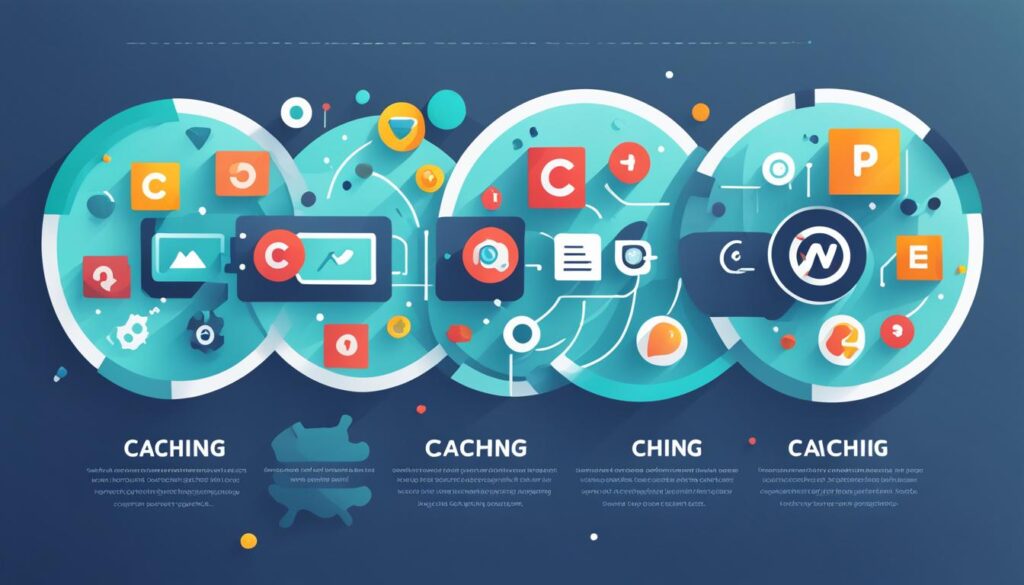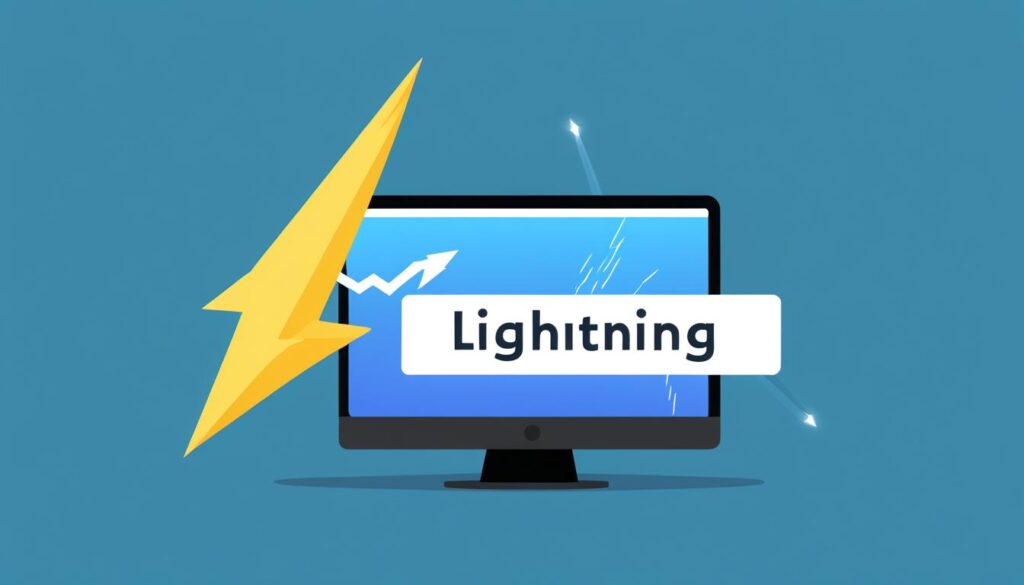In today’s fast-paced digital world, website speed has become a critical factor in determining the success of an online business. Slow-loading websites can lead to frustrated users, higher bounce rates, and ultimately, a loss in revenue. One of the most effective ways to address this issue is by leveraging the power of web caching. In this article, we’ll explore how you can use caching to speed up your website and provide your users with a seamless browsing experience.
Key Takeaways
- Web caching is a technique that stores and delivers web content more efficiently, reducing the time it takes for pages to load.
- There are different types of caching, including browser cache, proxy cache, CDN cache, and server cache, each with its own benefits.
- Implementing caching can significantly improve website performance, leading to faster page load times and a better user experience.
- Proper caching strategies and best practices, such as setting cache-control headers and optimizing content placement, are crucial for maximizing the benefits of caching.
- Measuring website speed and tracking the impact of caching is essential for ongoing optimization and ensuring your website remains fast and responsive.
What is Web Caching?
Web caching is a technique that stores temporary copies of web resources, such as images, CSS files, and JavaScript files, to improve website performance. When a user requests a web page, the cache can serve the cached resources instead of retrieving them from the origin server, reducing network latency and server load.
Understanding Web Cache Terminology
To effectively implement web caching, it’s essential to understand key terminology like cache control headers, ETags, and cache expiration. These concepts govern how web browsers and servers manage the caching process, ensuring that users receive the most up-to-date and optimized content.
Explanation of How Web Caching Works
The web caching process typically involves the following steps:
- A user requests a web page.
- The browser checks its local browser cache for the requested resources.
- If the resources are not found in the browser cache, the browser sends a request to the web server.
- The web server processes the request and sends the response, including the requested resources.
- The browser stores the resources in its local cache for future use.
This caching process can occur at both the browser and server level, with each type of web cache offering different benefits and implementation considerations.
“Caching is a critical component of modern web architecture, enabling faster content delivery and reduced server load.”
Types of Web Caching
Caching is a crucial technique for speeding up websites, and there are several types of web caching that can be employed to improve website performance. Understanding the different caching mechanisms and how they work can help you optimize your website for maximum efficiency.
Browser Cache
Browser caching is a client-side caching mechanism where web resources, such as images, CSS, and JavaScript files, are stored locally on the user’s computer. When a user visits a website, the browser checks its local cache for the requested resources. If the resources are found in the cache, they can be served directly to the user, reducing the need to download them from the origin server. Proper configuration of browser cache control headers, like Expires and Cache-Control, is crucial for ensuring that the cached resources are up-to-date and not stale.
Proxy Cache
Proxy caching is a server-side caching mechanism that involves an intermediary server, known as a proxy, between the client and the origin server. The proxy cache retrieves and stores copies of web resources, serving them to clients upon request. This can significantly improve website performance, especially for geographically distributed users, by reducing the distance between the user and the cached content. Proxy caches can be implemented as forward proxies, which cache content on behalf of clients, or reverse proxies, which cache content on behalf of origin servers.
Content Delivery Network (CDN) Cache
Content Delivery Networks (CDNs) are a type of proxy cache that distribute web resources across a global network of servers, known as “edge” servers. When a user requests a web page, the CDN serves the cached resources from the edge server closest to the user, reducing network latency and improving website performance. CDNs are particularly effective for websites with a geographically diverse user base, as they can cache and deliver content from locations around the world, providing a faster and more reliable user experience.
Server Cache
Server-side caching is a technique where the web server stores and serves cached copies of web resources, such as entire pages or individual objects like database query results. By caching content on the server, the server can respond to subsequent requests more quickly, without having to regenerate the content from scratch. Server caching can be implemented as full page caching, where the entire page is cached, or object caching, where only specific components or resources are cached. Server caching can significantly reduce the load on the origin server and improve the overall responsiveness of the website.

Benefits of Using Web Caching
Implementing web caching can provide numerous benefits for website owners and users alike. By leveraging the power of caching, you can unlock a host of advantages that can dramatically improve your website’s performance and enhance the overall user experience.
- Improved Website Performance: Caching reduces the time required to load web resources, resulting in faster page load times and a more responsive user experience. This improved performance can lead to increased user engagement and satisfaction.
- Reduced Server Load: By serving cached content instead of generating it from scratch, caching can significantly reduce the load on the origin server, allowing it to handle more concurrent requests. This, in turn, can lead to cost savings and improved server stability.
- Enhanced User Experience: Faster page load times and more responsive websites translate into a better overall user experience. This can improve engagement, conversions, and customer satisfaction, ultimately driving business growth.
- Cost Savings: Caching can reduce bandwidth usage and server resource consumption, leading to potential cost savings for website owners, especially for high-traffic websites. This can be particularly beneficial for businesses operating on a tight budget or those looking to optimize their operational expenses.
By leveraging the benefits of web caching, you can unlock a world of opportunities for your website. From improved performance and reduced server load to enhanced user experience and cost savings, the advantages of caching are numerous and can have a significant impact on the success of your online presence.

“Caching is a powerful tool that can transform your website’s performance and user experience. Embrace it to unlock the full potential of your online presence.”
How to use caching to speed up websites
Implementing web caching is a powerful technique to accelerate your website’s performance. By following these caching strategies and best practices, you can significantly improve your site’s loading times and provide a seamless user experience.
- Identify Cacheable Resources: Analyze your website’s content and determine which elements, such as images, CSS, JavaScript files, and static pages, are suitable for caching. These are the resources that can be stored locally on the user’s device or a content delivery network (CDN) for faster retrieval.
- Configure Browser Caching: Set appropriate cache-control headers, like Expires and Cache-Control, to instruct the user’s browser on how long it should cache the website’s resources. This ensures that returning visitors don’t have to download the same files repeatedly.
- Implement Server-side Caching: Configure your web server or content management system to cache dynamic content, such as database-driven pages or API responses. This can be achieved through techniques like page caching, object caching, or query caching, depending on your website’s architecture.
- Utilize a Content Delivery Network (CDN): Integrate a CDN to cache your website’s resources across a global network of edge servers. This reduces latency for users by serving the content from the nearest available server, resulting in faster load times.
- Monitor and Optimize Caching: Regularly review your website’s performance metrics and cache hit/miss ratios to identify areas for improvement. Fine-tune your caching strategies, adjust cache expiration times, and optimize your content delivery to continuously enhance the user experience.
By implementing these caching best practices, you can significantly speed up your website, providing a faster and more responsive browsing experience for your visitors. Remember, effective caching setup and configuration is a crucial aspect of optimizing your website’s performance.
“Caching is one of the most effective ways to improve website performance and reduce server load. When implemented correctly, it can make a substantial difference in your site’s speed and user experience.”
Best Practices for Implementing Web Caching
Effective web caching is crucial for improving website performance and user experience. To get the most out of your caching efforts, it’s essential to implement best practices, such as proper configuration of cache-control headers and strategically placing cached content across different locations.
Cache-Control Headers
The cache-control headers are the key to controlling how web resources are cached. These directives allow you to specify the caching behavior, such as how long a resource should be cached, whether the cache can be shared, and when the cache should be invalidated. Correctly applying cache-control headers, like max-age, no-cache, and must-revalidate, can ensure your website’s cached resources are up-to-date and serve the best user experience.
Locations to Cache Web Content
Web content can be cached at multiple locations to optimize performance, including:
- Browser cache: Caching resources in the user’s browser, such as images, CSS, and JavaScript files, to reduce subsequent load times.
- Server cache: Caching dynamic content, like database queries or API responses, on the web server to reduce the processing load.
- Content Delivery Network (CDN) cache: Caching website resources on a distributed network of edge servers to reduce latency for geographically dispersed users.
Implementing a multi-tiered caching approach, where content is cached at various levels, can provide the best balance of performance, scalability, and reliability for your website.
“Proper configuration of cache-control headers and strategic placement of cached content are essential for optimizing website performance and delivering a seamless user experience.”
Tools and Techniques for Measuring Website Speed
Ensuring your website’s performance is crucial for user satisfaction and search engine optimization. To achieve this, regular monitoring and analysis of your website’s speed and metrics are essential. Let’s explore some valuable tools and techniques that can help you optimize your website’s speed and deliver an exceptional user experience.
Web-based Performance Analysis Tools
One of the most popular and comprehensive web-based tools for website speed optimization is GTmetrix. This tool analyzes your website’s performance, providing detailed reports and recommendations for improvement. Another excellent option is Google PageSpeed Insights, a free tool from the search engine giant that evaluates your website’s performance on both desktop and mobile devices.
Comprehensive Performance Testing
WebPageTest is a powerful web performance testing tool that offers in-depth analysis, including waterfall charts and other valuable insights. Lighthouse, an open-source tool developed by Google, is another excellent choice for auditing your website’s performance, accessibility, and best practices.
Tracking Key Performance Metrics
By regularly monitoring your website’s performance metrics, such as First Contentful Paint (FCP), First Input Delay (FID), and Largest Contentful Paint (LCP), you can identify areas for improvement and fine-tune your caching strategies to optimize website speed optimization.
| Tool | Description |
|---|---|
| GTmetrix | A web-based tool that analyzes website speed and provides recommendations for optimization. |
| Google PageSpeed Insights | A free tool from Google that evaluates website performance on both desktop and mobile devices. |
| WebPageTest | A comprehensive web performance testing tool that provides detailed analysis and waterfall charts. |
| Lighthouse | An open-source Google tool that audits website performance, accessibility, and best practices. |
By leveraging these tools and techniques, you can gain valuable insights into your website’s performance, identify areas for improvement, and implement effective caching strategies to optimize your website’s speed and deliver an exceptional user experience.
“Improving website speed is crucial for user satisfaction and search engine optimization. Leverage the right tools and techniques to keep your website running at its best.”
Conclusion
As you’ve discovered, leveraging the power of website caching is a crucial step towards optimizing your website’s speed and delivering an exceptional user experience. By understanding the various types of web caching and implementing best practices for cache control headers and content placement, you can significantly improve your website’s performance, reduce server load, and enhance conversion rates.
Investing in web caching is a smart move that will pay dividends in the long run. Not only will it provide your visitors with a faster, more responsive website, but it will also help you maintain a competitive edge in today’s digital landscape where website speed and user experience are paramount.
Remember, consistent monitoring and optimization of your website’s caching strategies are essential to ensure that your website continues to deliver optimal performance. By staying up-to-date with the latest trends and techniques in website speed optimization, you can ensure that your website remains a shining example of efficiency and user-friendliness.
